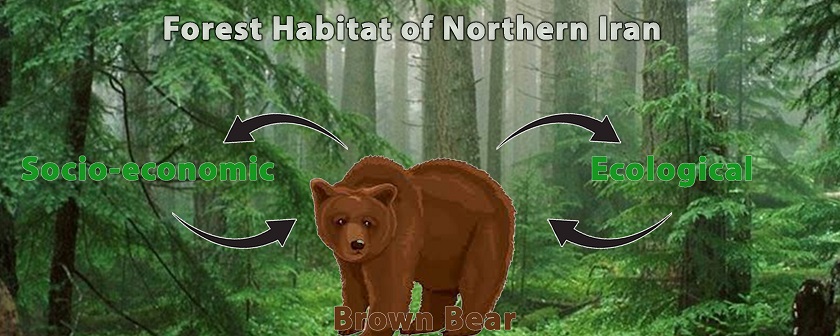Document Type : Research paper
Authors
1
Department of Forest Science, Natural Resources and Watershed Management Organization, Kermanshah, Iran
2
Department of Psychology, University of Tehran, Tehran, Iran
3
Department of Forest Biology, Faculty of Natural Resources, University of Tehran, Karaj, Iran
10.22034/CAJESTI.2022.06.01
Abstract
The study of the ecological parts of animals is always a gap in forest science and ecological studies. The present study aims to investigate the ecological and socioeconomic characteristics of brown bear (Ursus arctos syriacus) in the forest stands of northern Iran. The study relies on archival documents, including books on forestry, wildlife, history, anthropology, environmental sociology, natural resource law, and biography, as well as research reviews and sources, including relevant articles and reports, exploring and searching the Internet for relevant evidence, and conducting unstructured interviews. Unstructured qualitative content analysis interviews were conducted with experts and local people who have conflicts with brown bears, such as gardeners, beekeepers, and ranchers. The documents studied show that from a biological perspective, brown bears control populations of insects, invertebrates, and small vertebrates; facilitate decomposition and decay of dead wood in the forest; perform natural pruning; accelerate natural regeneration of forest trees; perform a carnivore burning function; and reduce the risk of wildfires. In socioeconomic terms, it also harms livelihood activities such as beekeeping, horticulture, and animal husbandry, leading to a certain belief in the animal. Understanding the ecological functions of forest animals such as brown bears in tree seed dispersal and establishment, soil fertility, and natural habitat leads to knowledge and awareness among decision makers and locals of the importance of wildlife conservation.
Graphical Abstract

Highlights
- The ecological and socioeconomic characteristics of the brown bear in the forest stands of northern Iran, studied using archival documents and unstructured interviews with qualitative content analysis.
- According to the results, the most important biological activities of brown bears were controlling populations, facilitating the decomposition, and accelerating the natural regeneration of trees.
- From a socioeconomic point of view, it harms some human activities such as animal husbandry, creating misconceptions about itself.
Keywords
Main Subjects

